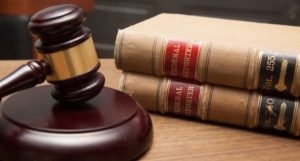The Great British Dig and University archaeologist find first excavated evidence of Roman mining in Cornwall

Dr Chris Smart (left) investigates one of the trenches at Calstock with the Great British Dig team. Credit, Strawberry Blond TV
The first excavated evidence that the Roman army were mining metals in Cornwall within just a few years of invading Britain has been unearthed thanks to an Exeter archaeologist and the new series of Channel Four’s The Great British Dig.
Calstock Roman fort, near the River Tamar, was chosen by The Great British Dig team to be one of the sites for its new series – which begins airing this week – to find out why it was built at that particular location, if there was a vicus – a civilian area immediately outside the fort – and how it related to the rest of Roman Cornwall.
Dating from around AD 50, Calstock Roman fort was discovered in 2007 by a team led by Dr Chris Smart, from the University’s Department of Archaeology and History, while carrying out geophysical surveys of the area to look for signs of a medieval silver mining industry.
Dr Smart has since led a programme of funded research digs at Calstock, which have mapped out the scale of the fort and many of the buildings within it. For the programme, he acted as an expert guide, directing the team as to where they should dig their trenches.
“With each successive excavation, we have been able to gradually reconstruct what was happening at Calstock, who was inhabiting it and what activities took place inside the defences,” Dr Smart said. “So, I am delighted that the team at The Great British Dig has made such a welcome contribution to answering some of the outstanding questions we had, including the involvement of the Roman military in mining in this landscape.”
Until recently, it was thought that the Roman frontier in South West Britain stopped at Exeter but the discovery of Calstock Roman fort led to new questions about why the Romans came to Cornwall and what they were doing there.
Cornwall has been internationally important for metal production, especially tin, since the Bronze Age but, to date, no evidence for mining in the Duchy by the Romans has been found, despite it being known for some time that they were interested in Britain for its mineral resources.
In the first episode of the new series, which will be broadcast on Thursday 15 June, archaeologist Dr Chloe Duckworth, from Newcastle University, and The Great British Dig team joined Dr Smart on the site. Together with volunteers from Calstock village, they set about investigating some of the features that showed up on the 2007 geophysical survey of the site, including a road that appears to lead into the fort and could have connected it to the rest of Cornwall, and some mysterious black patches.
During the programme, Dr Duckworth analysed pieces of rocky material found while excavating these strange patches using a specialist portable x-ray fluorescence (pXRF) device. This showed that it was Roman mining waste and is the first excavated evidence that the Romans were mining for the mineral-rich deposits in Cornwall.
Dr Duckworth said: “The week in Calstock was a massive success and provided some genuinely exciting discoveries. Not only did we find the first excavated evidence of Roman mining in Cornwall, but the diversity of finds our volunteers were making suggests that although it was only occupied for a short time, Calstock was clearly an important site for the Romans.”
Dr Smart is a landscape archaeologist who specialises in the heritage of Roman and medieval Britain. He currently manages the National Lottery Heritage Fund project ‘Understanding Landscapes’ which is engaging the public in research on Roman and medieval landscapes in Devon and Cornwall.




